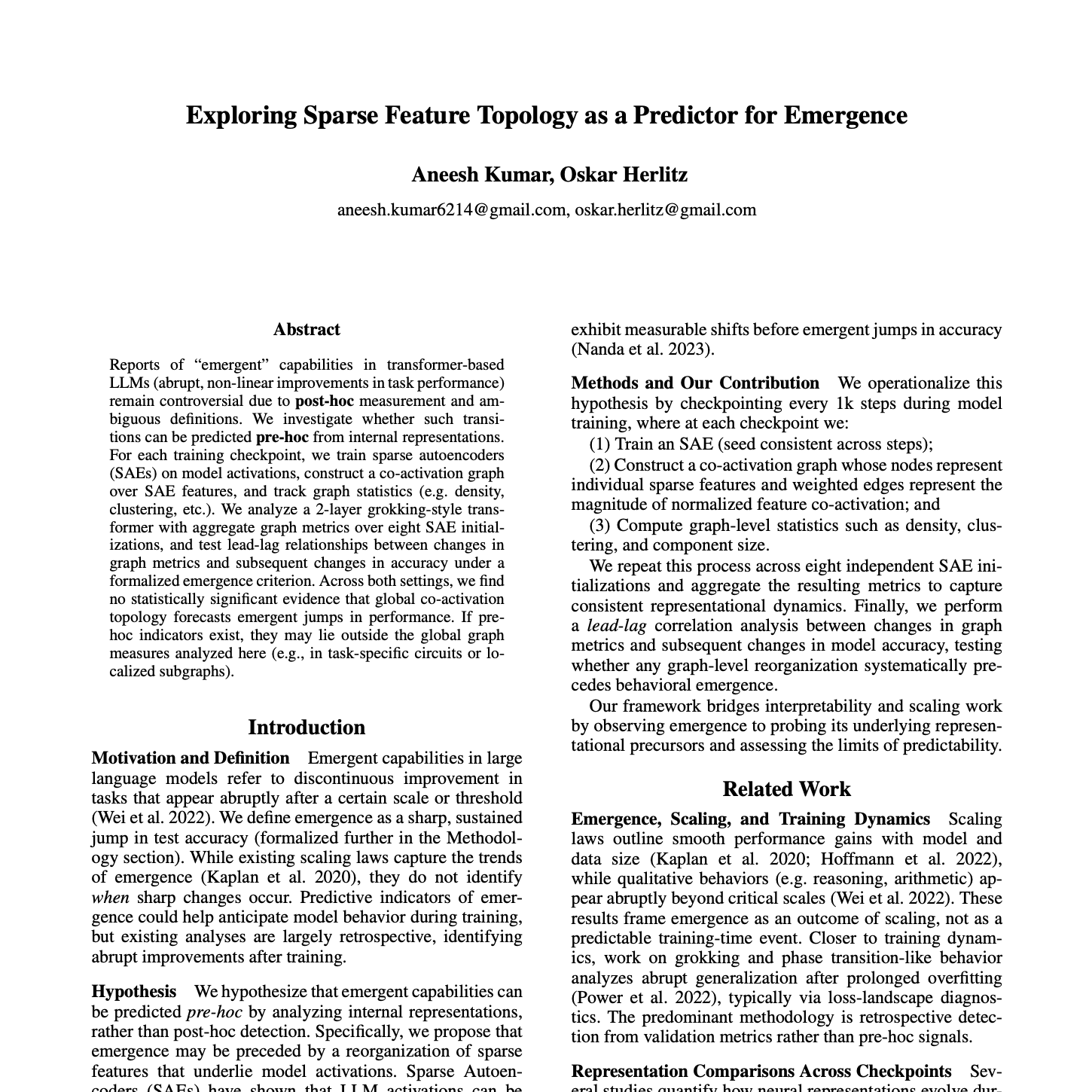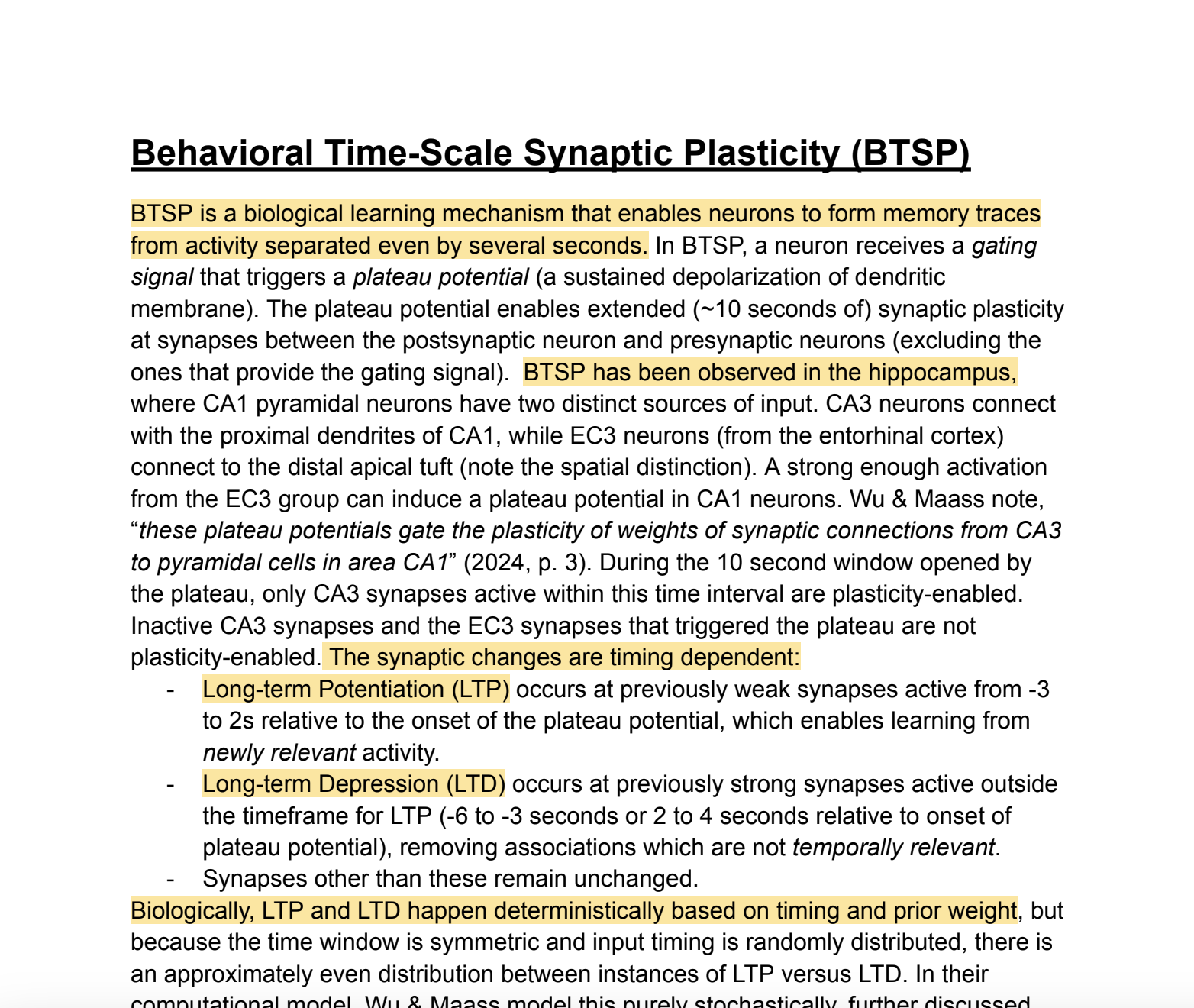Research Work
From Wikipedia, the free encyclopedia
This article covers the research work of Aneesh Kumar. For his industry experience, see Aneesh Kumar (Industry Work).
Paper: Predicting Emergent Capabilities Using Sparse Features
Fall 2025
Aneesh Kumar co-authored Exploring Sparse Feature Topology as a Predictor for Emergence, a paper accepted to the AAAI XAI4Science 2026 Workshop and soon to appear on OpenReview. The study investigates whether “emergent” capabilities in transformer-based models) can be predicted before they occur by analyzing internal representations rather than measuring them post hoc.
The authors train sparse autoencoders on model activations at each checkpoint of a two-layer transformer trained on a modular addition task, constructing co-activation graphs to track metrics such as density, clustering, and modularity. Across eight initialization seeds, they test for lead–lag correlations between graph-metric changes and subsequent accuracy shifts. The results find no statistically significant predictive relationship, suggesting that global topological measures of sparse features do not forecast emergent behavior and that potential pre-hoc indicators may reside in finer-grained, task-specific network structures.
The authors train sparse autoencoders on model activations at each checkpoint of a two-layer transformer trained on a modular addition task, constructing co-activation graphs to track metrics such as density, clustering, and modularity. Across eight initialization seeds, they test for lead–lag correlations between graph-metric changes and subsequent accuracy shifts. The results find no statistically significant predictive relationship, suggesting that global topological measures of sparse features do not forecast emergent behavior and that potential pre-hoc indicators may reside in finer-grained, task-specific network structures.

SAE-based Graphs for Emergence Prediction
Click to view documentReport: Biological Timescale Synaptic Plasticity
Spring 2025
Aneesh Kumar authored a comprehensive review of [Behavioral Time-Scale Synaptic Plasticity] (https://www.nature.com/articles/s41467-024-55563-6) (BTSP), a neural mechanism that enables memory formation over multi-second intervals, authored by Yujie Wu and Wolfgang Maass (2025). His work provides a clear overview of BTSP’s biological foundations in the hippocampus, explaining how plateau potentials in CA1 pyramidal neurons gate windows of plasticity that allow temporally scattered activity to be linked. The writeup details how this mechanism differs from conventional learning rules such as Hebbian learning and STDP, highlighting its role in addressing the problem of temporal credit assignment.
Beyond biological mechanisms, Kumar extends the discussion into computational and applied domains. He reproduces a computational model of BTSP using binary weights and stochastic update rules, demonstrating how the system achieves one-shot, content-addressable memory formation. The analysis further explores how BTSP could inform the design of foundation models and memory-augmented AI systems, proposing that BTSP-inspired architectures could enable more biologically plausible, context-sensitive forms of rapid learning. This dual perspective—bridging neuroscience and artificial intelligence—positions the work as both an explanatory resource and a forward-looking exploration of BTSP’s implications for computational models of learning.
Beyond biological mechanisms, Kumar extends the discussion into computational and applied domains. He reproduces a computational model of BTSP using binary weights and stochastic update rules, demonstrating how the system achieves one-shot, content-addressable memory formation. The analysis further explores how BTSP could inform the design of foundation models and memory-augmented AI systems, proposing that BTSP-inspired architectures could enable more biologically plausible, context-sensitive forms of rapid learning. This dual perspective—bridging neuroscience and artificial intelligence—positions the work as both an explanatory resource and a forward-looking exploration of BTSP’s implications for computational models of learning.

Report: Biological Timescale Synaptic Plasticity
Click to view document